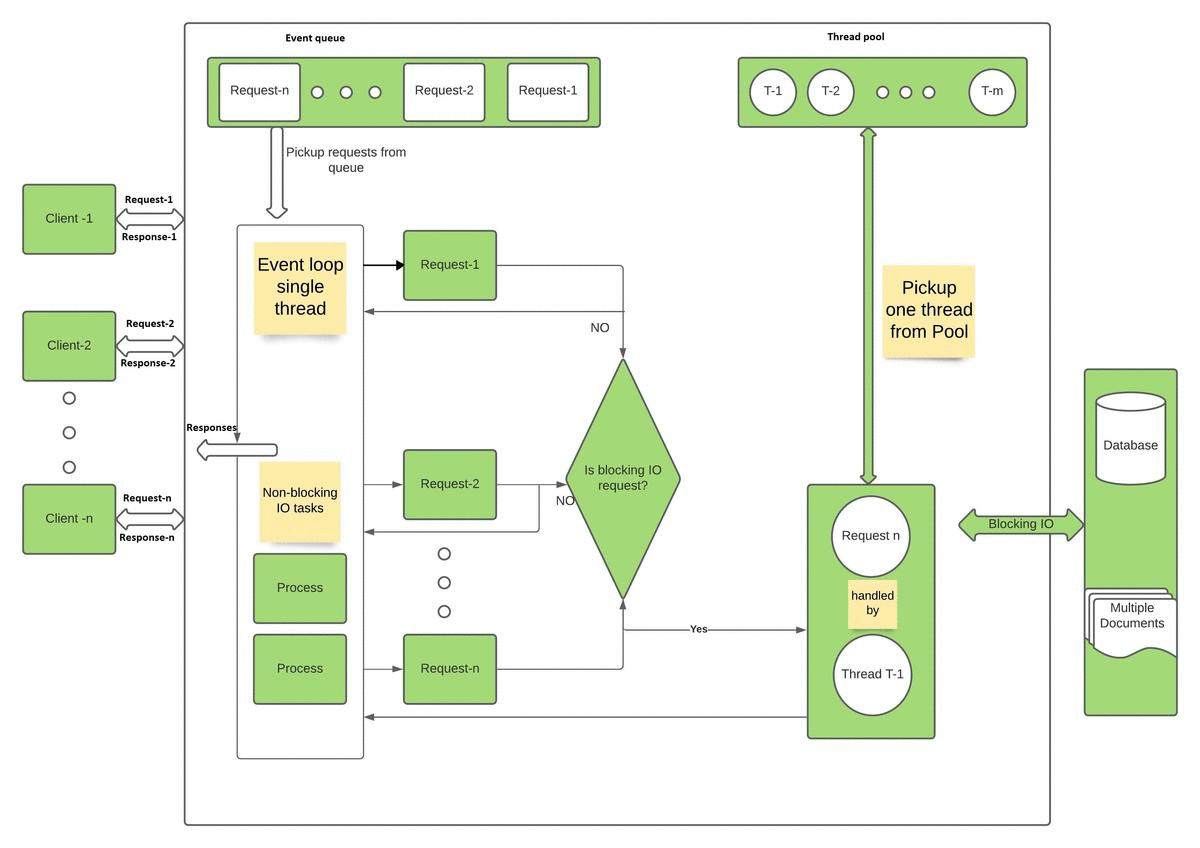As a developer, I've always been curious about how different server technologies handle requests and what makes one better than another for specific tasks. Recently, I delved into Node.js and found some interesting insights about how it handles I/O-bound and CPU-bound tasks compared to other technologies like PHP and ASP. Let me walk you through my findings.
What Are I/O-Bound Operations?
I/O-bound operations are tasks where the time spent waiting for input/output operations (like reading from or writing to a file system or a database) is the main factor in how long the task takes to complete. Common examples include:
- Database Operations: Reading from and writing to databases like MongoDB, MySQL, or SQL Server.
- File System Operations: Managing files on the server.
- Network Requests: Making HTTP requests to other servers or APIs and waiting for responses.
Node.js vs. PHP/ASP: Handling I/O-bound Tasks
Node.js is built on a single-threaded, non-blocking, asynchronous architecture. This means when it receives a request that involves an I/O operation, it delegates the task to the operating system and immediately moves on to handle the next request. When the I/O operation completes, a callback function is executed to handle the result.
This non-blocking nature makes Node.js extremely efficient for I/O-bound tasks. It doesn't waste time waiting for I/O operations to complete, allowing it to handle many more requests per second compared to traditional multi-threaded environments.
PHP/ASP, on the other hand, typically uses a multi-threaded approach. Each request is handled by a separate thread, and when an I/O-bound task is initiated, the thread waits (blocks) until the task is complete. While this can handle multiple requests simultaneously, it can lead to inefficiencies if many requests involve waiting for I/O operations.
Beyond I/O-bound: Understanding CPU-bound Tasks
While I/O-bound tasks are all about waiting for data, CPU-bound tasks are all about processing power. These tasks require significant CPU resources and can include:
- Data Processing: Complex calculations or data transformations.
- Image/Video Processing: Manipulating or converting media files.
- Encryption/Decryption: Securely handling data.
- AI/ML Tasks: Running machine learning models or performing inference tasks.
- Mathematical Computations: Intensive mathematical calculations or simulations.
Node.js and CPU-bound Tasks
For CPU-bound tasks, Node.js’s single-threaded nature can be a limitation. Since CPU-bound tasks can block the event loop, they can delay the handling of other requests. However, Node.js can still handle these tasks efficiently using worker threads or clustering to distribute the load across multiple cores. But for extremely CPU-intensive tasks, other technologies like Python (with frameworks like TensorFlow or PyTorch), Java, or C++ might be more suitable.
When to Choose Node.js
Node.js excels in scenarios where you need to handle many simultaneous I/O-bound operations:
- Real-time Applications: Chat apps or streaming services.
- Web APIs: RESTful or GraphQL APIs handle numerous simultaneous requests.
- Single-page Applications (SPAs): Efficiently serving API endpoints and handling real-time updates.
When to Consider Other Technologies
For applications involving heavy CPU-bound tasks, such as:
- Image Processing Services: Tasks like image resizing or conversion.
- Machine Learning Applications: Running and training complex models.
In these cases, multi-threaded environments like PHP, ASP, or languages optimized for CPU-bound tasks may be more efficient.
Conclusion
Choosing the right technology depends on your application's specific needs. Node.js is a powerful tool for handling I/O-bound tasks thanks to its non-blocking, asynchronous nature. However, for CPU-bound tasks requiring extensive computation, other technologies might be more appropriate. Understanding the nature of your tasks will help you make the best choice for your project.










.png)
0 Comments